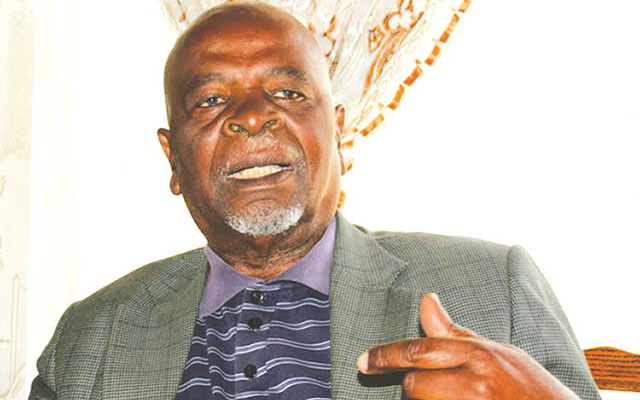The beauty of Tengenenge Village

Sharon Ngomani Arts Correspondent
After close to four hours of twists, turns and engine grumbles to the north of Zimbabwe we finally arrived at Tengenenge Art Village. The journey had been a scenic one as we eye feasted on rugged plains, plenty of greenery and healthy tobacco fields courtesy of heavy rains this just-ended summer season.
Nestled away from the almost frenzied town life of the nearby Mvurwi town, this village calmly rests on hemlines of mountains in Guruve against the Great Dyke. Upon arrival, we were met by scores of stone sculptors eagerly exhibiting zeal in a garden solely dedicated for this job. This is because the village is an open-air gallery. Serpentine and soapstone came to life in various structures exploring mysticism, spirituality, everyday life and everything else in between.
Also waiting for us were tour guides at the facility who spent the day explaining day-to-day life at Tengenenge with a tonne of patience.
“The art village was formed in 1966 by Thomas Blomfield, a farmer and chrome miner who had relocated to the then Rhodesia in 1946. But after Ian Smith’s Unilateral Declaration of Independence in 1965, heavy sanctions were imposed thereby negatively affecting farming and chrome mining. Thus he had to find ways of survival for him and his employees as well,” explained the tour guide.
With a gut to start an artistic career, the idea came to fruition after meeting Crispen Chakanyuka, a well-seasoned artist of that era. He was a product of Joram Mariga’s expertise. Chakanyuka thus offered basic technics of stone sculpting.
Then Blomfield enthused his workers to embrace stone sculpting with tools fabricated out of farming machinery. And naming the village after a nearby river Tengenenge — “the beginning of the beginning”, the art community was birthed.
From 2007, the art village is now owned by the celebrated international sculptor Dominic Benhura though he lets people on the ground to run the organisation.
The art community operates like this; artists receive raw materials for free, and the organisation takes care of mining, water and electricity expenses from the 35 percent commission paid by the artist on each sale.
To date, Tengenenge Art Community has around 400 contributing artists of whom 150 are resident artists. About 80 artists have their art displayed on stands in the garden of sculptures. There are about 20 female artists of whom only six are consistent.
After touring the vast expanse of art sculptures resting under the cooling Msasa trees, we proceeded to a grass- thatched stone museum the housing history of Tengenenge and works of first generation artists.
Silence, chilliness and an archaic smell conquered the atmosphere in the midst of first products of Tengenenge which were made from primary tools. This is where it all began. Inspiring! Now only Josiah Manzi aged 82 remains at Tengenenge as an active first generation artist. This means he has been sculpting for three generations.
Talk of wisdom in grey hair.
Then we toured the village where artists and their families reside. Depicting the life of our ancestors, the huts are typically mud and pole buildings capped with traditional thatch. On average, each artist is an owner of three huts comprising a kitchen, a room for the kids and master bedroom where secrets of intimacy are created and stored. The village has extra rooms for visitors who want to stay for the night or for days getting a learning experience.
From time to time we were met with welcoming smiles and if engaged in conversation, melting hearty laughs exploded. The people at Tengenenge are awesome. From the chubby young faces to wrinkled faces of the elderly.
They are a happy lot.
Competing with the heavy stench of soot hanging around the village, white ducks tip-toed and hilariously quacked; occasionally taking a dive to cool off in pools strategically dotted around the compound. Skeletons of lifeless vintage cars watched with great pity as the modern world walked past their good old days without a mere wink.
Proceeding with a small path to the left leading to serpentine and springstone quarries, a small shallow stream negotiated its way from the mountains cautiously into the compound where it replenished the duck pools.
It produced decent murmurs as tadpoles swam in the clear as day water intermittently rubbing shoulders with smooth pebbles lying careless on the stream bed. Healthy looking green algae added a pop of colour to the subtle glistening pebbles against the blazing sun.
After a short while we returned to the compound and took the right path which led into nearby mountains. Getting to a vantage point, Tengenenge village seemed like a clutter of tiny mushrooms. Ahead in the pale misty blue distance the Rhino head Mountain gave a blank gaze. Only sounds of the forest broke the silence. Our thigh muscles complained of the hike but it was totally worth it.
Just below the vantage point is Chikundungwi stream powered by a spring. This is where Tengenenge’s water supply comes from. The spring has been a consistent feature of the landscape over the decades as it is perennial; it has never dried up.
And like many springs in the country, it is shrouded in mystery. It is said that a giant python guards the spring with jealousy and no metal object is allowed to fetch water from it. Actually only one person is allowed to visit the spring as instructed by spirit mediums of the area. There is a story told about a guy who disappeared after trying his clever mind on trapping water from the spring with cement.
He is said to have immediately started feeling all kinds of things including sensations of prickling in the most private of body parts. And that was that. Like a shooting star he vanished.
Returning to the compound, we were rejuvenated by aroma escaping from the dining shed. This was one of a kind culinary experience as we dug into a variety of expertly cooked traditional foods.
Goat meat, okra, cowpea and pumpkin leaves were some of the food we had. Tengenenge Tsanza Dance Group provided entertainment with their energetic Dinhe dance routines.
We then joined sculptors either lazying at the workshop or busy polishing their art. It was fun to be taught how to carve stones within minutes, on site, producing meaningful souvenirs. Altogether it had been a good day well spent away from the madding crowd.
Tengenenge Art Village is not just an exhibition of exceptional stone sculptures, but it is an experience of cultural wholeness where tranquillity is inevitable. For generations now it has stood strong as one of Africa’s finest stone sculpting dynasties and there is no doubt that it will stay like that for more generations to come.










Comments